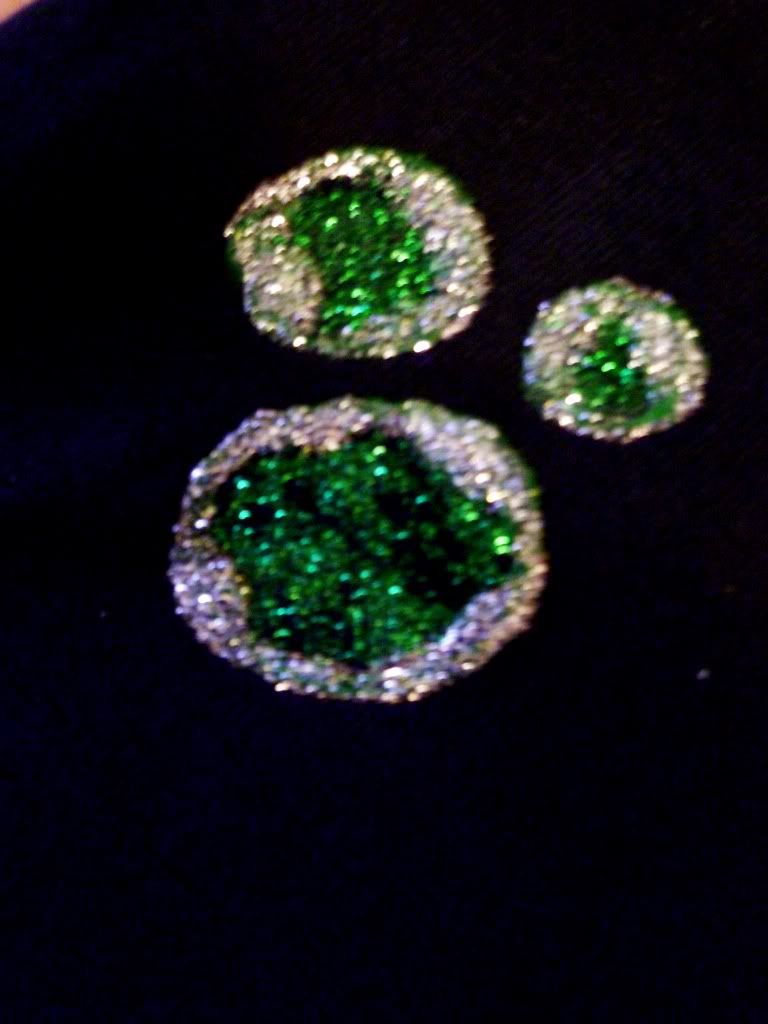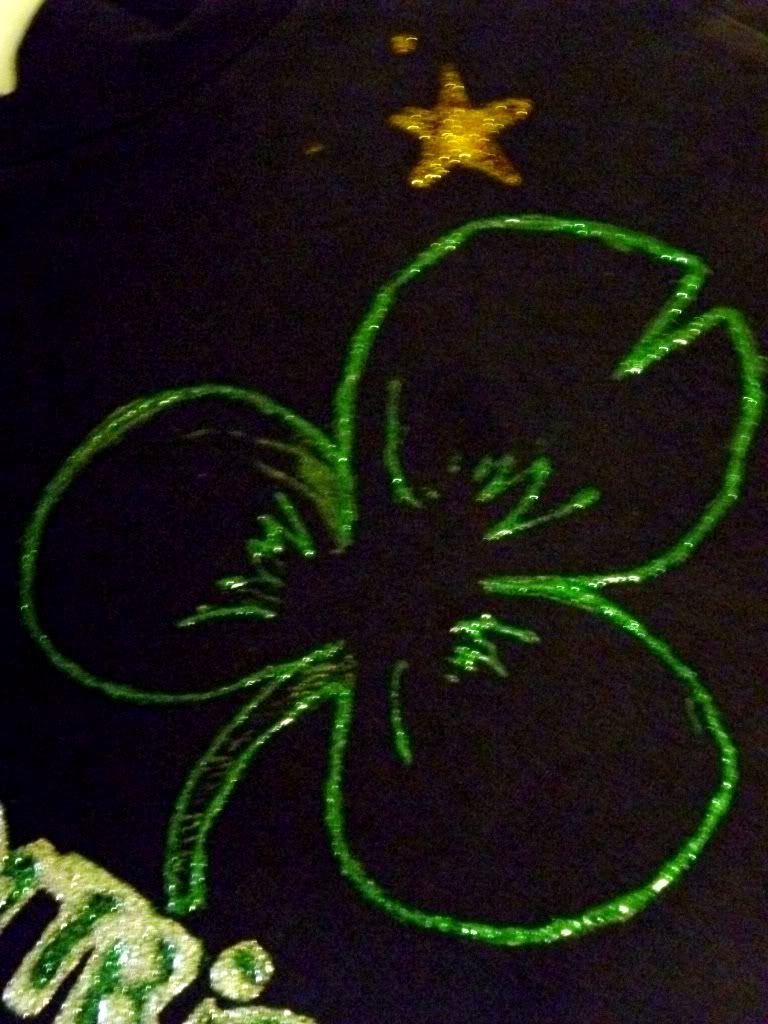A sneak peek into my preparations. Only Marta and Stéphanie were present when I conceived these plans for St Patrick’s Céilidh, which falls on the 18th of this month.

I tried translating “Today I am Irish” but now, I believe that before I even begin doing the front part of my shirt, I should consult an Irish-speaker… I wonder who’s well-versed in it.

I just had to. -__-

An overview of the back of the shirt. I decided to do the back first because I knew this would be pretty empty. Stéphanie was there when I bought the fabric paint and glitter glue tubes. The shirt came from a secondhand shop, and it was £1. I imagine I’ll be using this for future St Patrick’s Day gatherings.

A closeup of the text.

Stars! Poets often describe Ireland’s colours as “green, white and gold”, even though in actual fact it’s green, white and orange. I had to throw in some poet’s logic for this one — there were no orange glitter tubes, only gold ones, so I had to make do with these!

Some spots. ^_^

The upper portion of the shirt — shamrock included. I’m quite happy with the way the shamrock turned out under the fluorescent light — and it might even turn out quite well under orange or yellow lights.
_______________________________________
In case you’re wondering what the whole thing is about, St Patrick’s feast day falls on March 17 (Friday this year, and what with Lent and Via Crucis — Way of the Cross; our celebration falls the next day).
St Patrick was born at Kilpatrick, Scotland in 387 AD, and died at Saul, Downpatrick, Ireland in 461 AD. His parents were Romans living in Britain, and they were in charge of the colonies. At around the age of fourteen, he was captured during a raiding party and taken to Ireland as a slave to herd and tend to sheep. Ireland at the time was a land of Druids and pagans. Whilst he was there, he learned the language and the practices of the people who held him in captivity. He spent time in fervent prayer to God during his captivity.
At the age of 20, his captivity ended — he escaped after having a dream from God in which he was told to leave Ireland by going to the coast. There he found sailors who took him back to Britain, where he reunited with his family. In another dream, the people of Ireland were calling out to him, “We beg you, holy youth, to come and walk among us once more.” At this point, he began his studies for the priesthood. He studied under, and was ordained by, St Germanus, Bishop of Auxerre. He was later ordained a bishop and was sent to preach the Gospel to Ireland. He arrived at Slane, Ireland in 433 AD.
There he and his disciples preached the Gospel and converted thousands of people. Kings, families and entire kingdoms converted to Christianity upon hearing Patrick’s message (note: there was a time where provinces were once kingdoms, and the same happened in Britain). Among Patrick’s disciples were Beningnus, Auxilius, Isernius and Fiaac — all of them were later canonised as well.
Patrick’s ministry lasted forty years. He worked miracles and wrote of his love of God in “Confessions”. He lived in poverty, travelled and endured much suffering.
The shamrock is associated with St Patrick and the Irish because he used the shamrock to explain the Holy Trinity.
St Patrick, along with St Nicholas and St Valentine, are the saints who are cherished even by secular groups of people. And on St Patrick’s Day, everyone is Irish. Merrymaking and Céilidhs aside, St Patrick gave his life in total submission to God — and he brought Christianity to Ireland through his acts of charity. I think upon this, and I pray that I may give myself to Him in total submission and love just as he did.


0 comments:
Post a Comment